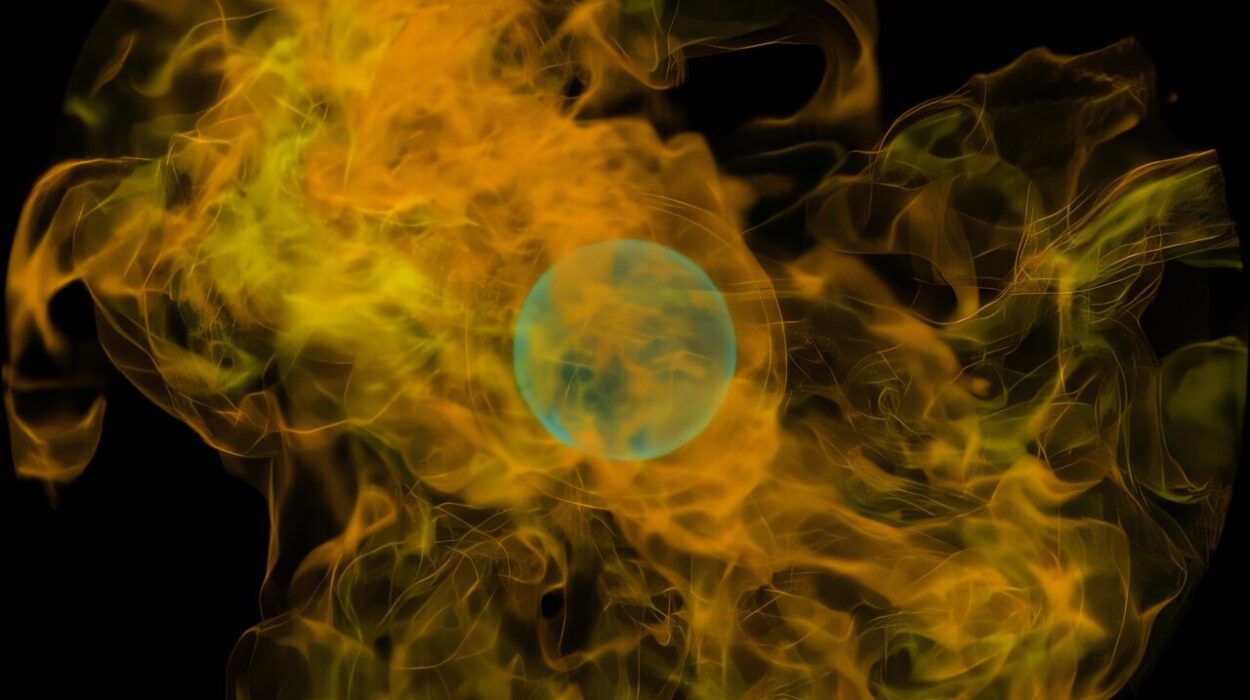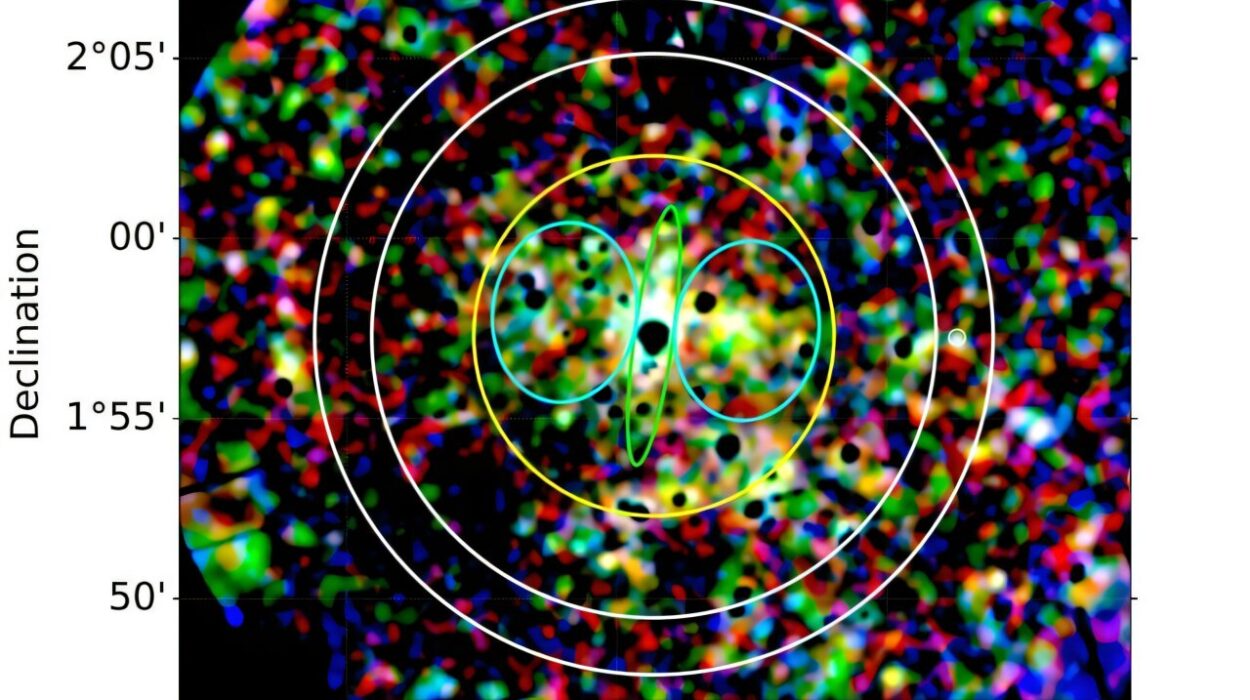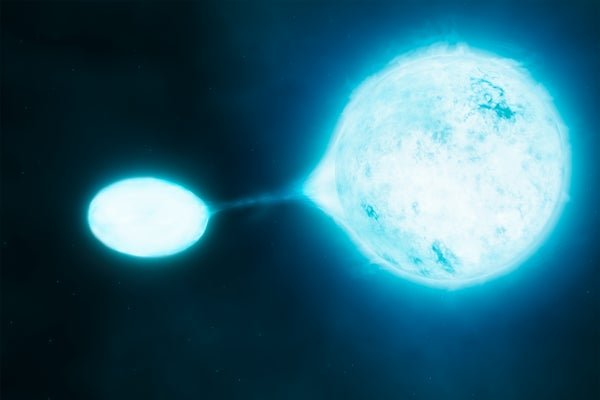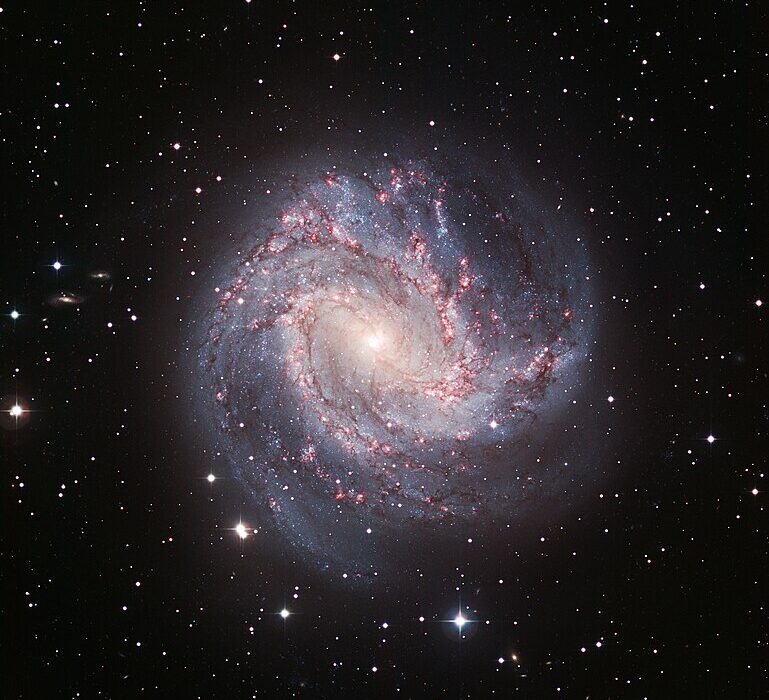In 2009, NASA’s Chandra X-ray Observatory captured one of the most hauntingly beautiful images in modern astronomy—a glowing nebula shaped eerily like a giant human hand stretching through the cosmos. Astronomers nicknamed it the “Hand of God,” though its official name is MSH 15-52. At its heart lies a pulsar known as B1509-58, a rapidly spinning neutron star that is one of the most powerful objects in our galaxy.
This image, combining the silent power of stellar death with the artistry of nature, immediately captured public imagination. But beyond its striking appearance lies a deeper story—one of violent cosmic collapse, extreme physics, and mysteries that scientists are still struggling to explain.
Birth in Catastrophe: How a Star Died and Became a Pulsar
The journey of B1509-58 began millions of years ago as a massive star, perhaps more than twenty times the mass of our Sun. Like all stars, it lived by burning nuclear fuel in its core, fusing hydrogen into helium, and later heavier elements. But massive stars live fast and die young. Once the star ran out of nuclear fuel, it could no longer resist the crushing pull of gravity.
The core collapsed inward in a fraction of a second, squeezing protons and electrons into neutrons. The result was a neutron star—a city-sized sphere only about 12 miles (20 kilometers) across, yet so dense that a teaspoon of its material would outweigh a mountain on Earth. Meanwhile, the star’s outer layers blasted outward in a supernova explosion, seeding space with heavy elements.
What remained at the center was B1509-58, a pulsar—essentially a cosmic lighthouse. It spins nearly seven times per second and possesses a magnetic field 15 trillion times stronger than Earth’s. This combination makes it one of the galaxy’s most powerful particle accelerators, flinging out streams of electrons and other particles at nearly the speed of light.
The Nebula That Looks Like a Hand
The pulsar’s particle winds inflate a vast bubble of energetic material around it—the nebula MSH 15-52. Spanning 150 light-years, or about 900 trillion miles, this nebula glows in high-energy X-rays. When Chandra’s X-ray telescope imaged it, the nebula’s glowing filaments formed the uncanny outline of a hand, complete with a palm and outstretched fingers.
It is not a literal hand, of course, but a natural outcome of physics. The “fingers” are formed by particles escaping along magnetic field lines, much like sparks tracing the shape of invisible forces. To the human eye, it is a breathtaking example of how the universe sometimes mirrors the familiar within the unfamiliar.
A Fresh Look: Radio Meets X-rays
While Chandra’s X-ray vision gave us the first glimpse of the hand-shaped nebula, new observations have deepened the mystery. Astronomers combined Chandra’s data with radio signals from the Australia Telescope Compact Array (ATCA), along with optical views of glowing hydrogen gas. The composite image reveals a layered, complex structure:
- X-rays appear in blue, orange, and yellow, showing high-energy particles racing outward from the pulsar.
- Radio waves appear in red, highlighting lower-energy structures and filaments shaped by magnetic fields.
- Optical light glows gold, marking scattered stars and remnants of the original supernova explosion, known as RCW 89.
The overlapping regions where X-rays and radio emissions coincide glow purple in the combined image, giving researchers vital clues about how the pulsar interacts with its environment.
Filaments, Fingers, and a Cosmic Puzzle
The new data uncovered something surprising: long, delicate filaments in the radio map that align with the nebula’s magnetic field. These filaments are likely created as the pulsar’s particle wind slams into debris from the supernova explosion. Yet not everything fits neatly. Some of the most striking X-ray features—the jet shooting downward and the three glowing “fingers” stretching upward—are invisible in radio waves.
This suggests that the most energetic particles are leaking out from a shock wave around the pulsar, similar to the way a supersonic jet creates a sonic boom. Guided by magnetic field lines, these particles trace out the shapes we see as fingers of the cosmic hand.
Even more perplexing is the sharp boundary of X-ray emission on the nebula’s edge. Astronomers suspect it marks the blast wave from the original supernova, but it lacks the expected radio signal. In most young supernova remnants, radio waves blaze brightly along such shock fronts. Why is this one silent in radio? The answer remains elusive.
The Story of RCW 89: A Collision with a Cosmic Cloud
Another piece of the puzzle lies in RCW 89, the supernova remnant associated with this structure. Unlike most remnants, which spread evenly, RCW 89 looks patchy and irregular. Its radio emissions align closely with clumps of X-rays and glowing hydrogen. This unusual pattern suggests that the expanding supernova debris is crashing into a dense cloud of hydrogen gas nearby, distorting its shape and producing bursts of radiation.
This interaction between the pulsar wind, the supernova remnant, and the surrounding interstellar medium creates a dynamic environment, one that astronomers are still struggling to fully understand.
Science and Mystery in the Hand of God
The Hand of God nebula is more than just a striking image—it is a laboratory for extreme physics. Within it, particles are accelerated to energies far beyond what Earth’s most powerful machines, like the Large Hadron Collider, can achieve. Magnetic fields twist and stretch across light-years, shaping matter into patterns that mimic human anatomy.
And yet, despite years of study, mysteries remain. Why does the X-ray blast wave lack radio emission? How exactly do the “fingers” form and persist? What role does the surrounding hydrogen cloud play in shaping RCW 89? Each new observation provides clues, but also raises fresh questions.
A Human Connection to the Cosmos
Perhaps what makes this discovery so captivating is its resonance with human imagination. We are pattern-seeking beings, and when we look into space, we often see echoes of ourselves. The Hand of God is not a literal hand reaching across the stars, but it reminds us that the universe can sculpt familiar shapes out of the most alien processes.
Albert Einstein once said, “The most beautiful thing we can experience is the mysterious.” The pulsar B1509-58 and its glowing hand-shaped nebula embody this truth. Born from a star’s violent death, shaped by forces beyond comprehension, and glowing across the electromagnetic spectrum, it stands as both a cosmic wonder and a scientific challenge.
Looking Ahead
As telescopes grow more powerful—radio arrays stretching across continents, X-ray observatories orbiting Earth, and future space missions on the horizon—astronomers will continue to peel back the layers of this enigmatic structure. Each new piece of data brings us closer to understanding how pulsars sculpt their surroundings and how supernova remnants evolve.
For now, the Hand of God remains both a cosmic masterpiece and a mystery, a symbol of the universe’s power to surprise us. It is a reminder that even in the vast emptiness of space, beauty and meaning can emerge from chaos.
More information: S. Zhang et al, High-resolution Radio Study of Pulsar Wind Nebula MSH 15–52 and Supernova Remnant RCW 89, The Astrophysical Journal (2025). DOI: 10.3847/1538-4357/adf333






